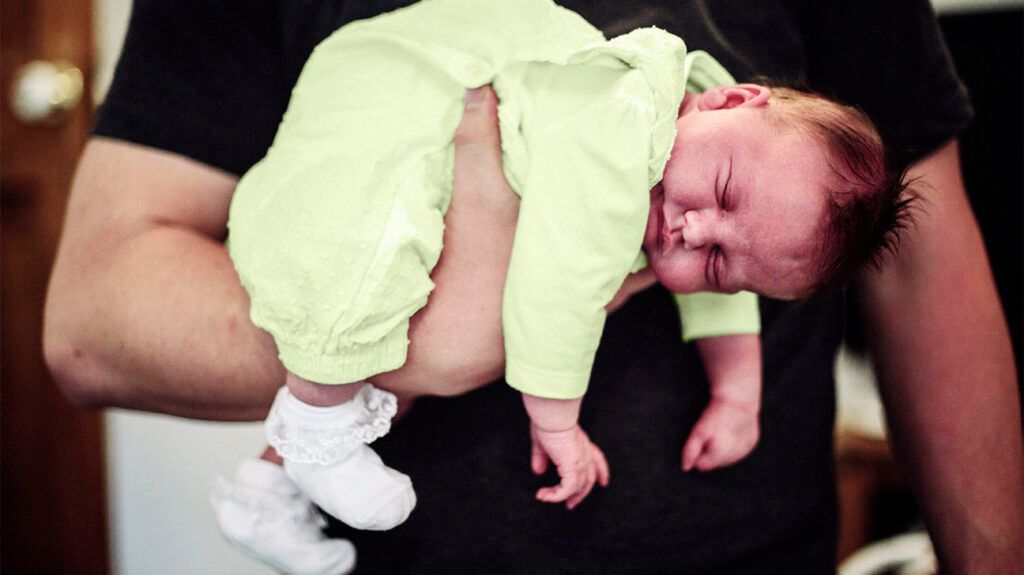Neurocutaneous syndromes are conditions that affect a person’s skin and nervous systems. They are present from birth. These disorders are incurable, but treatments are available to help manage symptoms.
Neurocutaneous syndromes can cause a person to develop tumors in different areas of their body. Additionally, they can cause skin symptoms. Neurocutaneous syndromes occur due to alterations in a person’s genes. A person may inherit these gene variations from a parent, or they may occur spontaneously.

Neurocutaneous syndromes describe a group of conditions that can impact the tissues of the nervous or neurological systems. This refers to tissues present in the brain, spine, and peripheral nerves.
Neurocutaneous syndromes are progressive conditions that can cause tumors to grow in these tissues. When a person has a neurocutaneous syndrome, they have variations in certain genes that are supposed to suppress tumor growth.
The gene alterations that cause neurocutaneous syndromes may also cause skin symptoms. These symptoms
Tuberous sclerosis, or tuberous sclerosis complex (TSC), is a neurocutaneous syndrome that causes benign — noncancerous — tumors to form in the brain.
The
- spinal cord
- nerves
- eyes
- lungs
- heart
- kidneys
- skin
- pancreas
TSC has a strong relationship with autism spectrum disorder (ASD). NINDS notes that many people with TSC also have ASD.
In addition to brain tumors, TSC can cause a variety of symptoms, such as:
- seizures
- cognitive difficulties
- behavioral problems
- patches of lighter skin
- red bumps or spots on the face
- raised areas of discoloration on the forehead
- patches of thick, leathery, pebbly skin
- small, fleshy tumors that develop under or around the toenails and fingernails
- skin tags
- cafe-au-lait marks, which are patches of darker skin
- tufts of white hair on the scalp or eyelids
NINDS states that around 1 in 6,000 children in the United States are born with TSC every year. It occurs due to a variation in either the TSC1 or TSC2 gene.
Neurofibromatosis refers to three different conditions. These conditions are neurofibromatosis 1 (NF1), neurofibromatosis 2 (NF2), and schwannomatosis (SWN). Each condition causes tumors that affect a person’s nervous system. These tumors are
Neurofibromatosis 1
NF1 is the
- six or more cafe-au-lait marks
- two or more soft, pea-sized lumps on the skin, or one larger tumor on multiple nerves
- freckling in the armpits or groin
- two or more growths on the iris of the eye
- a tumor on the optic pathway in the eye
- bone deformities
- children being shorter than average and having a larger head
- cardiovascular complications
- poor visual and spatial awareness
- poor performance in academic tests
- behavioral challenges
- headaches
- seizures
- cancerous tumors on the glial cells of the nervous system
- an increased risk of breast cancer in young females
- an increased risk of certain tumors, such as gastrointestinal stromal tumors (GIST)
- curvature of the spine
Neurofibromatosis 2
NF2 is less common than NF1, occurring in
Symptoms of NF2 include:
- benign, slow-growing tumors that affect a person’s nervous system
- vision problems, such as cataracts, at an earlier age than usual
- nerve damage that can cause weakness and numbness in both arms and legs
- hearing loss
- ringing in the ears
- issues with balance
Schwannomatosis
SWN is the
SWN has similar symptoms to NF2 as it develops because of the same slow-growing tumors. Other symptoms of SWN include:
- tumors on a single part of the body, such as a leg or arm
- chronic pain
- numbness, weakness, or tingling in the fingers and toes
- loss of muscle function
Sturge-Weber syndrome is a
Sturge-Weber syndrome can also cause abnormal blood vessels to develop on the brain’s surface. Additionally, it can cause calcium deposits in the cerebral cortex, alongside a loss of brain tissue. The cerebral cortex is the outer layer of a person’s brain.
Symptoms of Sturge-Weber syndrome include:
- seizures
- intermittent or permanent muscle weakness
- developmental delays
- cognitive impairment
- glaucoma
- migraine
Neurocutaneous syndromes have
A doctor may perform a physical exam to diagnose a person with a neurocutaneous syndrome. The doctor may also perform imaging tests, such as MRI or CT scans.
Currently, there are
- chemotherapy
- selumetinib (Koselugo), a drug that helps prevent tumor cells from growing
- surgery to remove tumors
- seizure medication
- pain medication
- laser treatment to remove birthmarks
- physical, occupational, behavioral, or speech therapy
Neurocutaneous syndromes are conditions that affect a person’s nervous system and skin. They can cause tumors in different areas of the body and skin symptoms.
Neurocutaneous syndromes are present from birth. A person can inherit them from a parent or develop them spontaneously. They typically occur due to variations in genes that are supposed to suppress tumor growth.
At present, there are no cures for neurocutaneous syndromes. However, a person can manage symptoms using various treatments.
